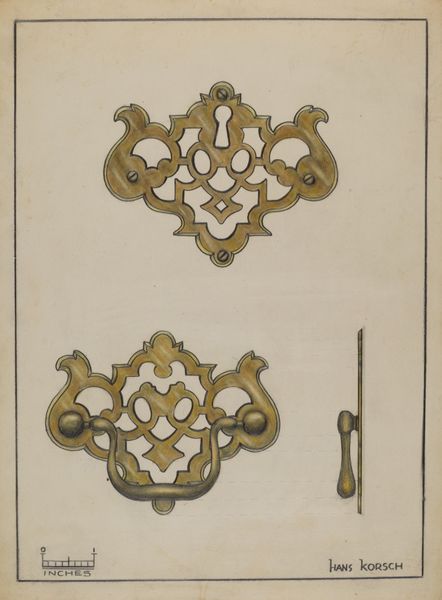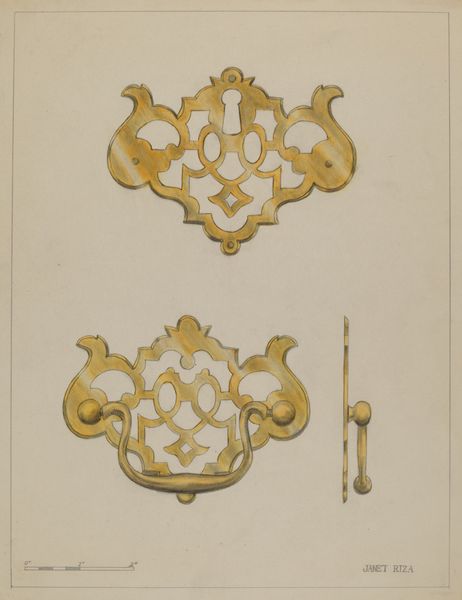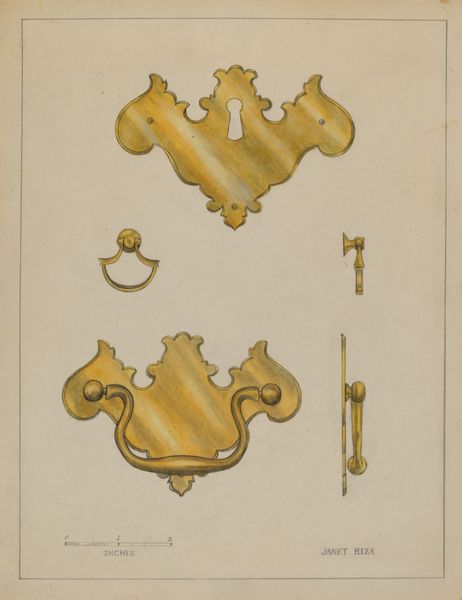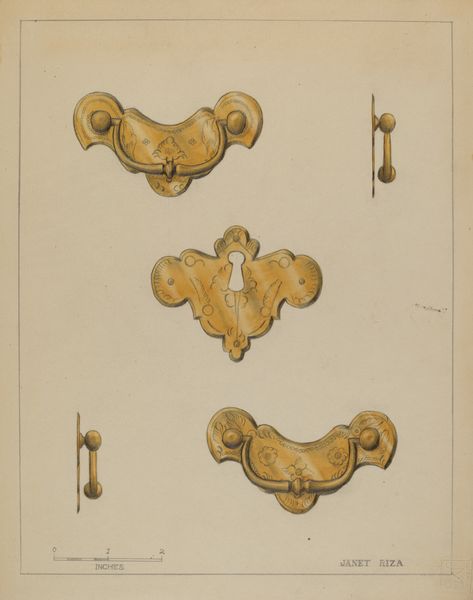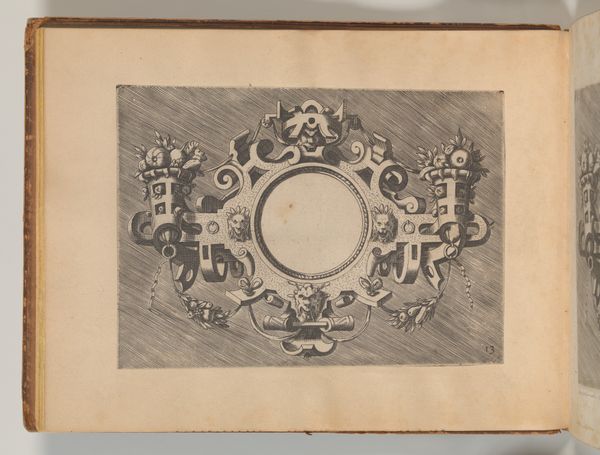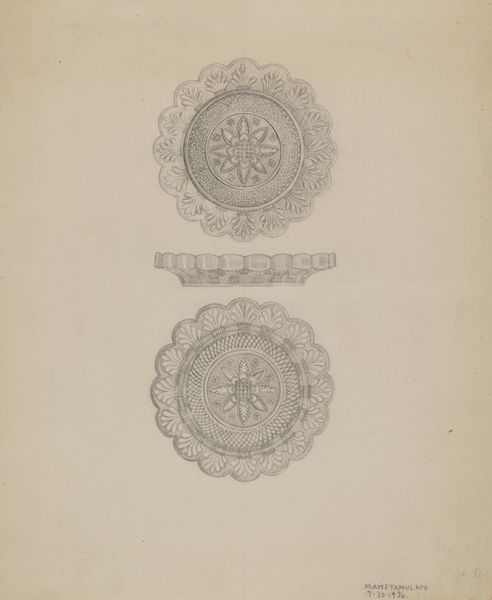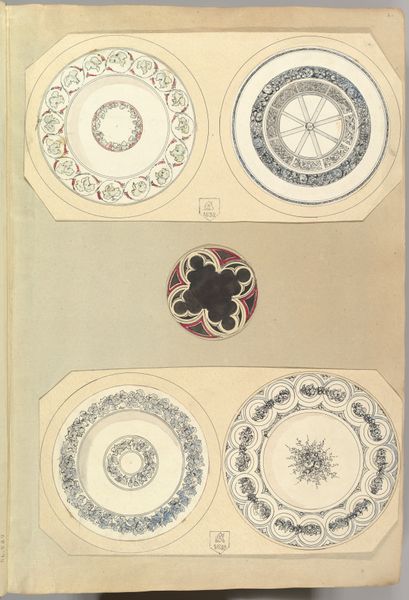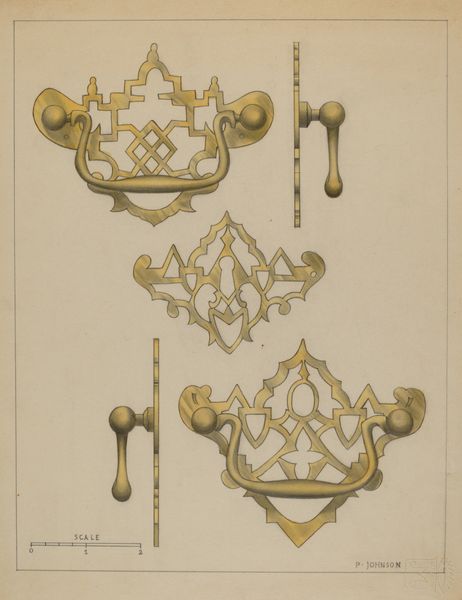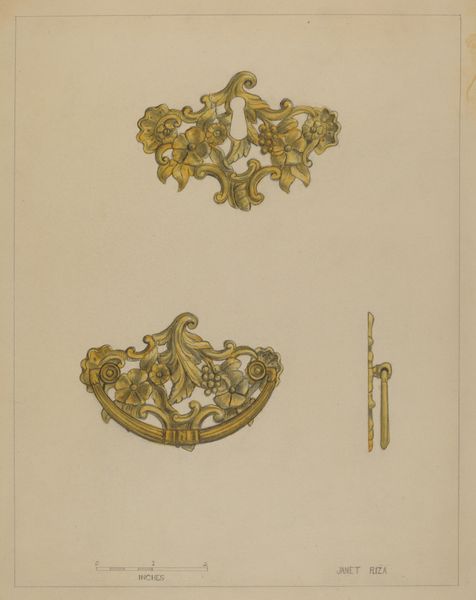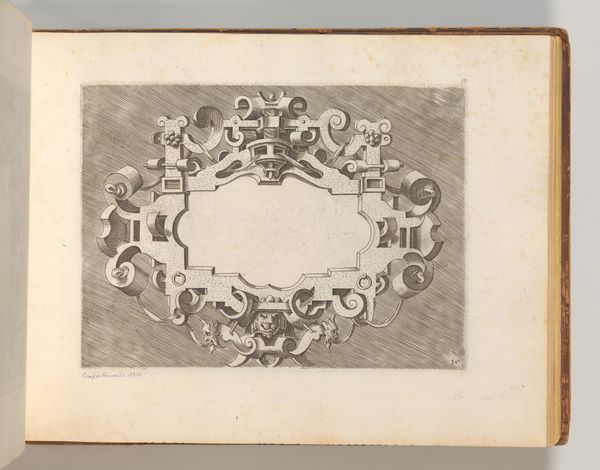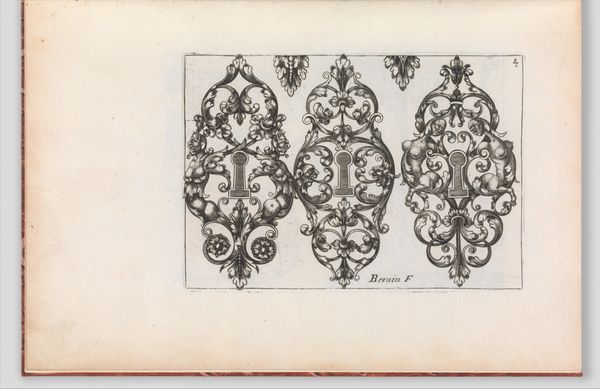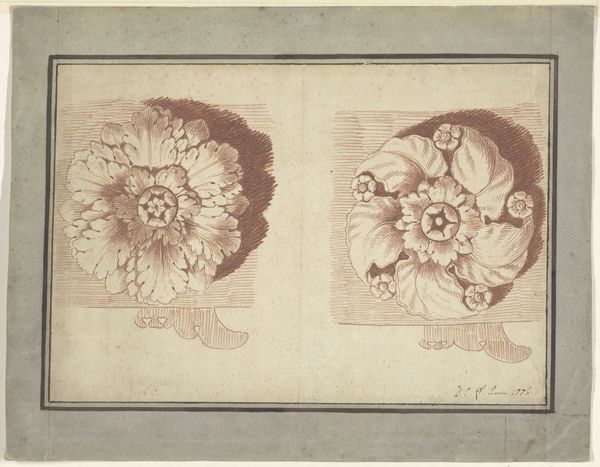
drawing
#
portrait
#
drawing
#
watercolor
Dimensions: overall: 23 x 29.3 cm (9 1/16 x 11 9/16 in.) Original IAD Object: 2 5/8" in diameter
Copyright: National Gallery of Art: CC0 1.0
Editor: Here we have Philip Johnson’s "Rosette Mounts," from around 1936, rendered in watercolor. They remind me a little bit of jewelry; maybe brooches. The details are incredibly intricate. What jumps out at you when you see this work? Curator: I notice first the careful consideration given to the craft of architectural detailing. The drawing's materiality points us to the actual, physical rosettes intended for a specific building or design. Watercolor elevates these functional objects to an aesthetic plane. I see Johnson's architectural vision deeply intertwined with production. Editor: So, are you saying that even something ostensibly decorative serves some greater, practical function? Curator: Exactly. We must ask, who produced these rosettes? What workshops, what labour went into these little details? Were they mass-produced, or individually crafted? And how does the watercolor – a luxury in itself – factor into the commodification of design? Editor: It makes you think about the social and economic circumstances that allow such detailing to exist. The level of craftsmanship represents not only artistry but specialized labor and available resources. Curator: Precisely! Even the 'decoration' can illuminate economic realities and the division of labor. Think of it not just as 'pretty,' but as a result of distinct processes. We see watercolor elevating humble design, reflecting a particular culture of architectural display and production. Editor: It's changed the way I'll look at architectural drawings; now I will consider them as documents of material culture, too! Thanks! Curator: My pleasure. It's always enriching to reconsider these overlooked works from the material perspective.
Comments
No comments
Be the first to comment and join the conversation on the ultimate creative platform.
